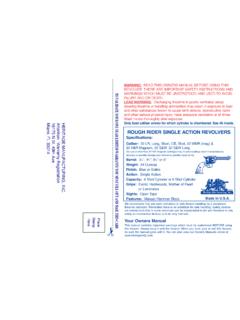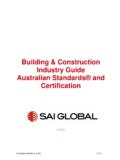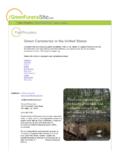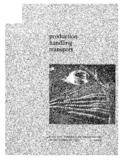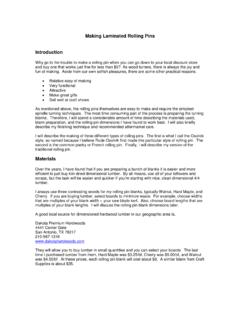Transcription of DSC-203 Version 1.0 SECTION 1) CHEMICAL PRODUCT AND ...
1 ERA_EHS Report Code M007 Page 1 of 8 SAFETY DATA SHEET DSC-203 Apr 20, 2015 Version SECTION 1) CHEMICAL PRODUCT AND supplier 'S identification PRODUCT ID : DSC-203 PRODUCT Name : Red Dye Concentrate Revision Date : Apr 20, 2015 Date Printed : Apr 20, 2015 Supersedes Date : Manufacturer's Name : Address : Emergency Phone : Information Phone : SDS Fax # : JDC SUPPLY 2212 EDGEWOOD AVE SOUTH, SAINT LOUIS PARK. MN 55426 Chemtrec: 952-546-5600 PRODUCT /Recommended Uses: Stain SECTION 2) HAZARDS identification Classification: Specific Target Organ Toxicity - Single Exposure - Category 1 Skin Irritation - Category 2 Eye Irritation - Category 2A Carcinogenicity - Category 2 Flammable Liquid Category 2 Flammable Liquids Category 2 Pictograms: Signal Word: Danger Hazardous Statements - Physical: Highly flammable liquid and vapor Hazardous Statements - Health: Causes damage to organs (or state all organs affected, if known) (state route of exposure if it is conclusively pr oven that no other routes of exposure cause the hazard) Causes skin irritation Causes serious eye irritation Suspected of causing cancer (state route of exposure if it is conclusively proven that no other routes of exposure c ause the hazard) Hazardous Statements - Environmental: Not classified Precautionary Statements - General: Not classified Precautionary Statements - Prevention.
2 Keep away from heat, hot surfaces, sparks, open flames and other ignition sources. No smoking. Keep container tightly closed. Ground/bond container and receiving equipment. ERA_EHS Report Code M007 Page 2 of 8 DSC-203 Apr 20, 2015 Version Use explosion-proof <electrical/ventilating/lighting/..> equipment. Use only non-sparking tools. Take action to prevent static discharges. Wear protective gloves/protective clothing/eye protection/face protection. Do not breathe dust/fume/gas/mist/vapors/spray. Wash ? thoroughly after handling. Do not eat, drink or smoke when using this PRODUCT . Obtain special instructions before use. Do not handle until all safety precautions have been read and understood. Precautionary Statements - Response: IF ON SKIN (or hair): Take off immediately all contaminated clothing. Rinse skin with water <or shower>. In case of fire: Use .. to extinguish. IF IN EYES: Rinse cautiously with water for several minutes. Remove contact lenses, if present and easy to do.
3 Continue rinsing. IF ON SKIN (or hair): Take off immediately all contaminated clothing. Rinse skin with water <or shower>. In case of fire: Use dry CHEMICAL , foam, or carbon dioxide to extinguish. IF exposed or concerned: Call a POISON CENTER/doctor/? Specific treatment (see ? on this label). IF ON SKIN: Wash with plenty of water/? If skin irritation occurs: Get medical advice/attention. Take off contaminated clothing. And wash it before reuse. IF IN EYES: Rinse cautiously with water for several minutes. Remove contact lenses, if present and easy to do. Continue rinsing. If eye irritation persists: Get medical advice/attention. IF exposed or concerned: Get medical advice/attention. Precautionary Statements - Storage: Keep cool. Store in a well-ventilated place. Store locked up. Precautionary Statements - Disposal: Dispose of contents/container to disposal recycling center. Under RCRA, it is the responsibility of the user of the PRODUCT to determine at the time of disposal whether the PRODUCT meets RCRA criteria for hazardous waste.
4 Waste management should be in full compliance with federal, state and local laws. Dispose of contents/container to ? SECTION 3) COMPOSITION / INFORMATION ON INGREDIENTS CAS 0000064-17-5 CHEMICAL Name ETHYL ALCOHOL % by Weight 69% - 100% 0000067-56-1 METHANOL - 0000108-10-1 METHYL ISOBUTYL KETONE - SECTION 4) FIRST-AID MEASURES Inhalation: Take precautions to ensure your own safety. ( wear appropriate protective equipment. Remove source of exposure or move person to fresh air and keep comfortable for breathing. Call a POISON CENTER/doctor if you feel unwell. Skin Contact: ERA_EHS Report Code M007 Page 3 of 8 DSC-203 Apr 20, 2015 Version Take off contaminated clothing, shoes and leather goods ( watchbands, belts). Wash with plenty of lukewarm, gently flowing water for 15-20 minutes. If skin irritation or rash occurs: Get medical advice/attention. Store contaminated clothing under water and wash before re-use. Eye Contact: Remove source of exposure or move person to fresh air.
5 Rinse eyes cautiously with lukewarm, gently flowing water for several minutes, while holding the eyelids open. Remove contact lenses, if present and easy to do. Continue rinsing for a duration of 15-20 minutes. Take care not to rinse contaminated water into the unaffected eye or onto the face. If eye irritation persists: Get medical advice/attention. Ingestion: Rinse mouth. If you feel unwell/concerned: Get medical advice/attention. SECTION 5) FIRE-FIGHTING MEASURES Suitable Extinguishing Media: Use dry CHEMICAL , foam or carbon dioxide to extinguish fire. Unsuitable Extinguishing Media: Not available. Fire-fighting Procedures: Isolate immediate hazard area and keep unauthorized personnel out. Stop spill/release if it can be done safely. Move undamaged containers from immediate hazard area if it can be done so safely. Water spray may be useful in minimizing or dispersing vapors and to protect personnel. Special Protective Actions: Wear protective pressure self-contained breathing apparatus (SCBA) and full turnout gear.
6 Care should always be exercised in dust/mist areas. Use water to keep fire-exposed containers and the surroundings cool. SECTION 6) ACCIDENTAL RELEASE MEASURES Recommended Equipment: Positive pressure, full-facepiece self-contained breathing apparatus (SCBA), or positive pressure supplied air respirator with escape SCBA (NIOSH approved). Personal Precautions: Avoid breathing vapor. Avoid contact with skin, eye or clothing. Do not touch damaged containers or spilled materials unless wearing appropriate protective clothing. Emergency Procedure: Keep unnecessary people away; isolate hazard area and deny entry. Do not touch or walk through spilled material. Collect with absorbent, non-combustible material into suitable containers. If spilled material is cleaned up using a regulated solvent, the resulting waste mixture may be regulated. Environmental Precautions: Do not flush to sewer or waterways. Prevent release to the environment if possible. SECTION 7) HANDLING AND STORAGE General: Wash hands after use.
7 Do not get in eyes, on skin or on clothing. Do not breathe vapors or mists. Use good personal hygiene practices. Eating, drinking and smoking in work areas is prohibited. Remove contaminated clothing and protective equipment before entering eating areas. Eyewash stations and showers should be available in areas where this material is used and stored. Ventilation Requirements: Use process enclosures, local exhaust ventilation, or other engineering controls to keep airborne levels below recommended exposure limits. If user operations generate dust, fume or mist, use ventilation to keep exposure to airborne contaminants below the exposure limit. ERA_EHS Report Code M007 Page 4 of 8 DSC-203 Apr 20, 2015 Version Storage Room Requirements: Keep in a cool, dry, well-ventilated area, away from any incompatibilities. Store in approved containers and protect against physical damage. Keep containers securely sealed when not in use. Containers that have been opened must be carefully resealed to prevent leakage.
8 Empty container retain residue and may be dangerous. Empty Containers retain PRODUCT residue which may exhibit hazards of material, therefore do not pressurize, cut, glaze, weld or use for any other purposes. Return drums to reclamation centers for proper cleaning and reuse. SECTION 8) EXPOSURE CONTROLS/ PERSONAL PROTECTION Eye Protection: Dust-proof goggles or safety glasses with side shields or vented/splash proof goggles. Contact lenses may absorb irritants. Particles may adhere to lenses and cause corneal damage. Skin Protection: Use of gloves approved to relevant standards made from the following materials may provide suitable CHEMICAL protection: PVC, neoprene or nitrile rubber gloves. Suitability and durability of a glove is dependent on usage, frequency and duration of contact, CHEMICAL resistance of glove material, glove thickness, dexterity. Always seek advice from glove suppliers. Contaminated gloves should be replaced. To prevent skin contact wear protective clothing covering all exposed areas.
9 Avoid unnecessary skin contact. Respiratory Protection: If engineering controls do not maintain airborne concentrations to a level which is adequate to protect worker, a respiratory protection program that meets or is equivalent to OSHA 29 CFR and ANSI should be followed. Check with respiratory protective equipment suppliers. CHEMICAL Name OSHA TWA (ppm) OSHA TWA (mg/m3) OSHA STEL (ppm) OSHA STEL (mg/m3) OSHA- Tables- Z1,2,3 OSHA Carcinogen OSHA Skin designation NIOSH TWA (ppm) NIOSH TWA (mg/m3) NIOSH STEL (ppm) NIOSH STEL (mg/m3) NIOSH Carcinogen ETHYL ALCOHOL 1000 1900 1 1000 1900 METHANOL 200 260 1 200 260 250 325 METHYL ISOBUTYL KETONE 100 410 1 50 205 75 300 CHEMICAL Name ACGIH TWA (ppm) ACGIH TWA (mg/m3) ACGIH STEL (ppm) ACGIH STEL (mg/m3) ACGIH Carcinogen ACGIH Notations ACGIH TLV Basis ETHYL ALCOHOL 1000 A3 A3 URT irr METHANOL 200 262 250 328 Skin; BEI Headache, eye dam METHYL ISOBUTYL KETONE 20 75 307 A3 A3; BEI URT irr; dizziness.
10 Headache SECTION 9) PHYSICAL AND CHEMICAL PROPERTIES Physical and CHEMICAL Properties Density lb/gal % Solids By Weight % VOC Appearance Liquid Odor Description Solvent Odor Threshold pH Melting Point ERA_EHS Report Code M007 Page 5 of 8 DSC-203 Apr 20, 2015 Version Freezing Point Low Boiling Point High Boiling Point Flash Point Symbol Flash Point 50 F Evaporation Rate Flammability N/A Upper Explosion Level Lower Explosion Level Vapor Density Vapor Pressure Water Solubility Coefficient Water/Oil Auto Ignition Temp Decomposition Pt Viscosity SECTION 10) STABILITY AND REACTIVITY Stability: Stable under normal conditions and use. Conditions to Avoid: Avoid great heat, sparks, flame, build up of static electricity and contact with incompatible materials. Avoid temperature above maximum storage temperature. Hazardous Polymerization: Will not occur. Incompatible Materials: Not available. Hazardous Decomposition Products: No data available.


